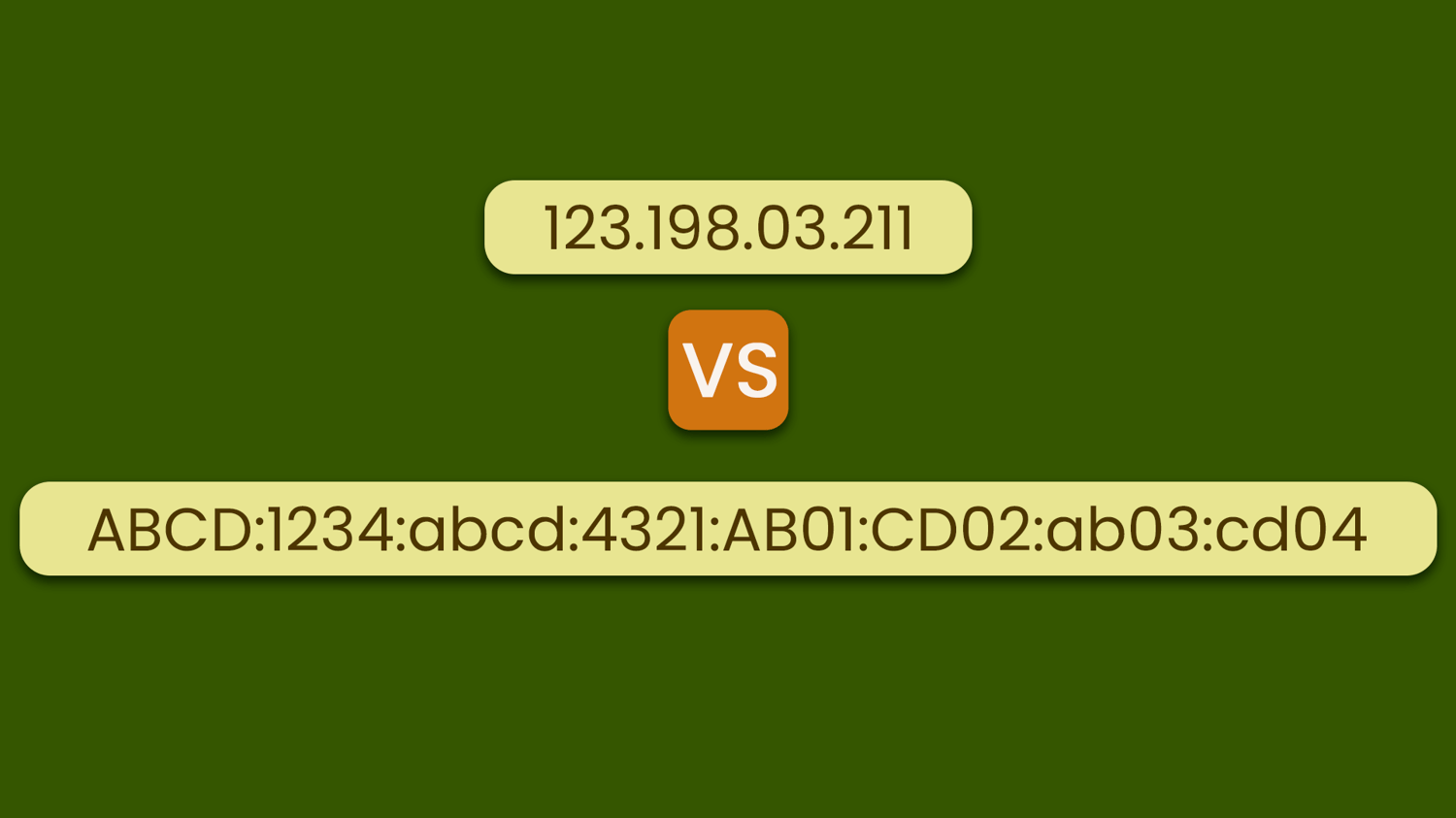What is an address IP, IPv4 & IPv6?

What is IPv4?
IPv4, the fourth Internet Protocol version, is a datagram transmission mechanism in computer networks. This protocol was the first widely deployed IP protocol.
Every device connected to the Internet will be assigned a unique IP address, such as 23.198.03.211. IPv4 uses 32-bit (4 bytes) addresses, storing about 4.3 billion addresses. Still, as more and more users access the Internet, the global IPv4 address has been challenging to meet the needs of the future, so the proposal of IPv6 came into being.
What is IPv6?
IPv6 is the sixth version of the proposed Internet protocol. IPv6 uses hexadecimal addresses, and the address length is 128b, four times the length of IPv4 lessons. The address length can support more than 340 trillion addresses. They are usually divided into eight groups, four hexadecimal numbers form a group, and a colon separates each group. Its proposal not only solves the problem of lack of network address resources but also optimizes some existing problems and solves the obstacles for various devices to access the Internet.
Classification of IPv6 addresses
Unicast address
An IPv6 packet contains a source IP address and a destination IP address. The host interface is assigned a unique IP address within that network segment. When a network switch or router receives a unicast IP packet destined for a single host, it sends out one of its output interfaces connected to that specific host.
Multicast address
A multicast address is assigned to a group of different interfaces and will send a packet from a multicast address to all addresses. IPv6 multicast mode is the same as IPv4. Packets destined for multiple hosts are sent to particular multicast addresses. All hosts interested in the multicast information must join the broadcast group first. All interfaces joining the group receive the multicast packets and process them, while other hosts not interested in the multicast data ignore the multicast information.
Anycast address
An IPv6 anycast address is used to identify a group of interfaces on different IPv6 nodes. Each group of interfaces is called an anycast group. When a packet is sent to an anycast address, the member of the anycast group physically closest to the sender will receive the package. When a host wishes to communicate with a host equipped with an anycast IP address, it sends a unicast message. With the help of sophisticated routing mechanisms, this unicast message is delivered to the host closest to the sender in terms of routing cost.
What are the differences between IPv4 and IPv6?
Although IPv4 and IPv6 are used to identify the addresses of devices connected to the Internet. They have similar principles but work differently, so what's the difference between IPv4 and IPv6?
Safety
For IPv4, the Internet Security Protocol (IPsec) is optional. But for IPv6, it must have the Internet security protocol.
In addition, authentication, data consistency, and confidentiality have been added to IPv6. As a result, IPv6 is more secure than IPv4.
Performance
Compared with IPv4, IPv6 increases the address length from 32 bits to 128 bits, which can support more address requirements. IP addresses will not run out for the foreseeable future. Also, IPv6 has a larger encoded address space than IPv4.
IP header
IPv4 has a variable length of 20~60 bytes according to the IP options provided, while IPv6 has a fixed size of 40 bytes, and the header is more uncomplicated than IPv4.
Applicability
IPv4 was introduced earlier than IPv6 and has taken a leading position in the market. On the other hand, IPv6 has a lengthy deployment process. Due to the immature technology, incompatibility with infrastructure, and inability to transition from IPv4 to IPv6.
How to choose IPv4 and IPv6?
IPv6 expands the address space compared to IPv4, providing hundreds of trillions of addresses to meet the foreseeable needs of the Internet. Simplifies network configuration and reduces costs.
The global network transition from IPv4 to IPv6 is inevitable, but IPv4 will not wholly replace quickly.
Follow Us on Social Media
Recent Articles
How to Use VPNs for Secure Social Media Management
Jul 29, 2024 | 9 mins to readHow to Set Up a VPN on Windows 10/11?
Aug 14, 2024 | 7 mins to readHow to Use Signal App in Russia: Solve Signal Ban
Aug 12, 2024 | 4 mins to read30 Best FMovies Alternatives in 2024 (Still Working)
Aug 12, 2024 | 14 mins to readAccess anything anywhere anonymously with X-VPN
24/7 one-one live chat support
Ultimate protection for 5 devices
Access to all worldwide contents
8000+ servers at 225 locations
30-DAY MONEY-BACK GUARANTEE

